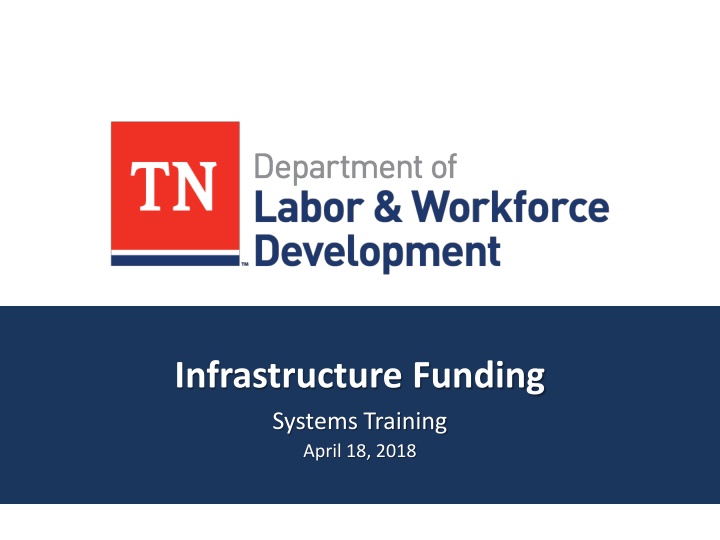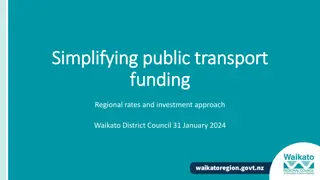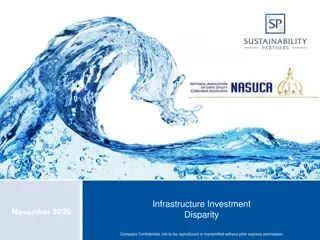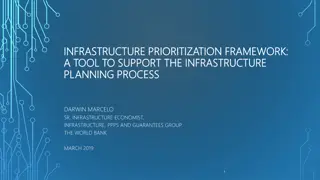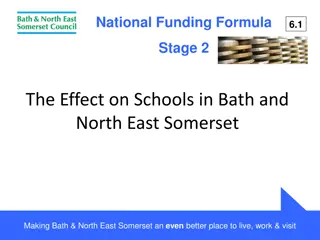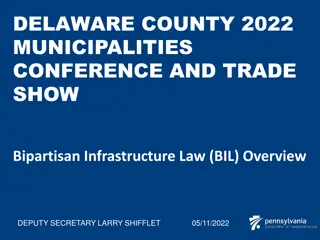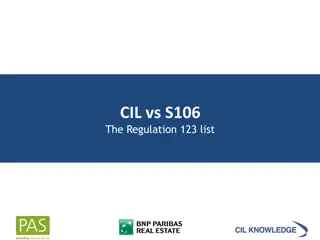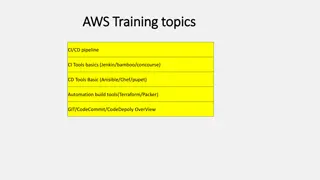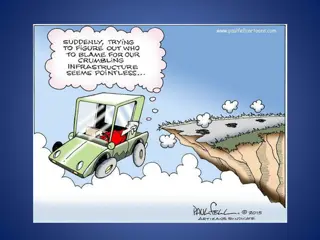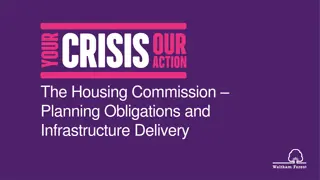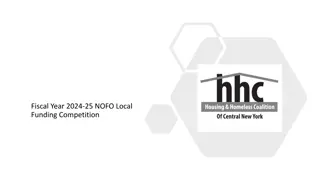Streamlining Infrastructure Funding Processes for Effective Implementation
Facilitating a comprehensive guide on Infrastructure Funding Systems Training and Contract Management. Explore essential steps post IFA/MOU completion, managing budgets, submitting claims for reimbursement, and ensuring seamless coordination between partners for successful project execution.
Download Presentation

Please find below an Image/Link to download the presentation.
The content on the website is provided AS IS for your information and personal use only. It may not be sold, licensed, or shared on other websites without obtaining consent from the author.If you encounter any issues during the download, it is possible that the publisher has removed the file from their server.
You are allowed to download the files provided on this website for personal or commercial use, subject to the condition that they are used lawfully. All files are the property of their respective owners.
The content on the website is provided AS IS for your information and personal use only. It may not be sold, licensed, or shared on other websites without obtaining consent from the author.
E N D
Presentation Transcript
Infrastructure Funding Systems Training April 18, 2018
Agenda You ve complete the IFA/MOU, now what? IFA Contracts Grants4TN Budgets Claims Quarterly Reconciliation Amending the IFA
Infrastructure Funding Agreement You ve completed the spreadsheet. You ve completed negotiations. Your partners have agreed to the costs. Now what?
Infrastructure Funding Contracts The State will use the submitted copy of the final, signed IFA budget to issue a contract to the LWDB/Fiscal Agent.
Infrastructure Funding Contract The contract will be issued for the combined amount of all TDLWD partners, signifying the total amount that the state can bill the LWDB and the total amount the LWDB can bill the state.
Infrastructure Funding Contract The contract is issued to the Fiscal Agent for the combined amount of all TDLWD partners.
Grants4TN The contract budget will be broken down by partner in Grants4TN:
Claims Submitting a claim for reimbursement.
Claims Note: If your area has an AJC in a state owned building, you will see two types of claims, Reimbursement and Payment. Reimbursement The local area is requesting reimbursement from TDLWD for their fair share of expenses. Payment TDLWD is requesting reimbursement from the local area for their fair share of expenses.
Claims General Information: Enter the Report Period and the Expected Distribution Date. As of right now we are requesting that the Expected Distribution Date be a month from the day you are submitting the claim.
Claims Reimbursement Section: Enter the amount your area is requesting to be reimbursed by each TDLWD program in the Expenses This Period column.
Claims Local Partners: Enter the expenses for all of the non TDLWD partners.
Claims IFA Costs: These numbers should match the numbers that have been entered in the Reimbursement and Local Partner Sections.
Claims IFA Costs: Enter the costs by TDLWD, LVER, DVOP, LVDV, and Local One Stop.
Claims Claim Supporting Documentation Attachments: The documentation should support the numbers that you are requesting reimbursement for.
Claims Once the five sections have been completed, the claim is now ready to be submitted.
Quarterly Reconciliation The LWDB is required to reconcile the IFA no less than quarterly. The amounts billed to the partners should be analyzed to ensure that the budget is sufficient for the remaining months of the year. EX: SNAP E&T budget is July actuals billed to SNAP E&T August actuals billed to SNAP E&T September actuals billed to SNAP E&T Remaining Balance Estimated remaining charges ($500*9) Annual remaining balance $13,254 $ 500 $ 500 $ 500 $11,754 $ 4,500 $ 7,254
MOU/IFA Consistent with 20 CFR 678.755, 34 CFR 361.755, and 34 CFR 463.755, IFAs must include the following elements: a) The period of time in which the IFA is effective (which may be a different time period than the duration of the MOU); Identification of the infrastructure costs budget, which is a component of the one-stop operating budget; Identification of all one-stop partners, CEO(s), and the Local WDB participating in the IFA; A description of the periodic modification and review process to ensure equitable benefit among one-stop partners; Information on the steps the Local WDB, CEO(s), and one-stop partners used to reach consensus or the assurance that the local area followed the SFM process; and A description of the process to be used among partners to resolve issues related to infrastructure funding during the MOU duration period when consensus cannot be reached. b) c) d) e) f)
MOU/IFA The following are the general steps in the allocation of infrastructure costs process: Identify one-stop operating costs, including infrastructure costs and additional costs. Develop the one-stop operating budget that includes an infrastructure costs budget and additional costs budget. Develop the cost allocation methodology, including the identification of cost pools and allocation bases. Determine estimated partner contributions. Prepare and agree to the IFA(s). Allocate actual costs by each partner's proportionate use and relative benefit received. Conduct a periodic reconciliation (i.e., monthly or quarterly). Modify infrastructure costs budget and/or cost allocation methodology, as appropriate. Evaluate the existing process and prepare for the following program year.
